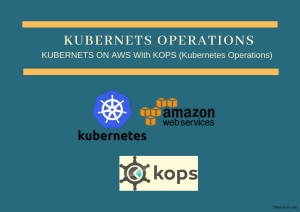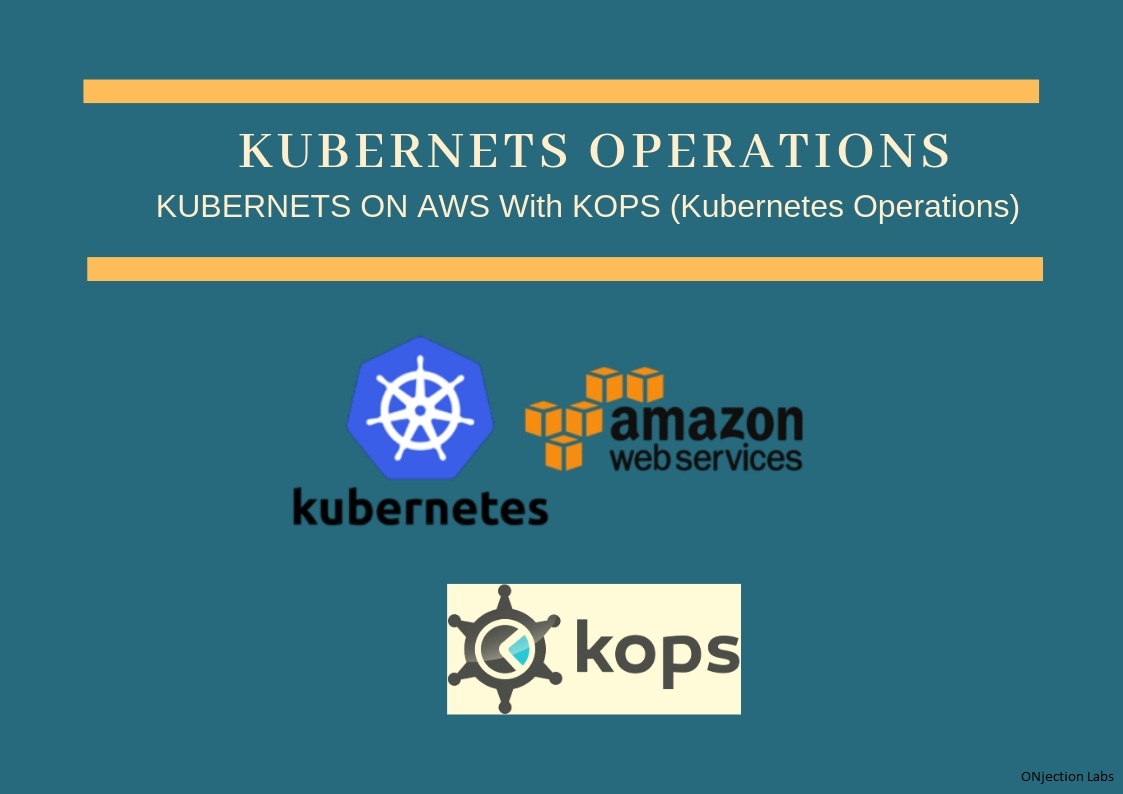KOPS: Build production grade K8s.
Why KOPS
- Automates the provisioning of Kubernetes clusters in AWS and GCE
- Deploy Master-Master Kubernetes cluster.
- Generate terraform managed file (kubernetes.tf)
- Add master and slave nodes in autoscaling group to ensure nodes are running properly.
- Supports custom Kubernetes add-ons
- Enabled CLI tab completion for easy operation
- Rolling upgrade of cluster resources without downtime.
- Ability to dry run on templates to ensure there is no syntax errors.
Setting Up kubernetes cluster in 5 easy steps:
Requirements
- Kops and kubectl command line tool.
- Aws CLI, user access key ID and secret access key
- Install KOPS command line tool.
-
- curl -LO https://github.com/kubernetes/kops/releases/download/$(curl -s https://api.github.com/repos/kubernetes/kops/releases/latest | grep tag_name | cut -d ‘”‘ -f 4)/kops-linux-amd64
- chmod +x kops-linux-amd64
- cp kops-linux-amd64 /usr/bin/kops
-
- Install Kubectl from below link:
https://kubernetes.io/docs/tasks/tools/install-kubectl/
- Install AWS CLI to use your access key ID and secret access key:
- pip install awscli –upgrade
- pip install awscli –upgrade –ignore-installed six # if get an error then run this command
Getting start
- Create a new IAM user or use an existing IAM user and grant following permissions:
- AmazonEC2FullAccess
- AmazonRoute53FullAccess
- AmazonS3FullAccess
- AmazonVPCFullAccess
- Create Amazon S3 bucket for kops to persist its state. Replace mybucketkops with yours
- export bucket_name=mybucketkops
- aws s3api create-bucket –bucket ${bucket_name} –region us-east-1
- Enable versioning to revert or recover a previous state store by KOPS.
- aws s3api put-bucket-versioning –bucket ${bucket_name} –versioning-configuration Status=Enabled
- Exporting env variables to bashrc / profile for KOPS
export KOPS_CLUSTER_NAME=mykubernetes.k8s.local
export KOPS_STATE_STORE=s3://${bucket_name}
- Generate ssh-keys to interact for KOPSs
- ssh-keygen -t rsa
- Build the cluster using KOPS CLI and save to S3 bucket using below command:
kops create cluster –cloud=aws –node-count=2 –node-size=t2.medium –zones=us-east-1a –yes
- Validate kubernetes cluster using the command: `kops validate cluster`. This will take some to up the cluster. It might throw an error connection refused.
- Get cluster list: ` kops get cluster `
- Checking kubernetes cluster node ready status:- `kubectl get nodes`
Cleaning up
Delete created infra with Kops using the command: `kops delete cluster –yes`
What’s next?
- Deploy Kubernetes cluster on Amazon Aws using Kops & Terraform in existing VPC.
- Manage Kubernetes master node using terraform.
- Kubeadm to automate the installation and configuration of Kubernetes cluster.
- Kops vs Kubeadm bootstrapping to build Kubernetes cluster.
- Deployment of front and backend in Kubernetes cluster.


